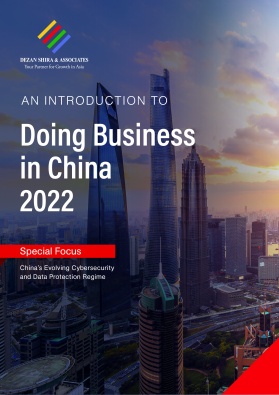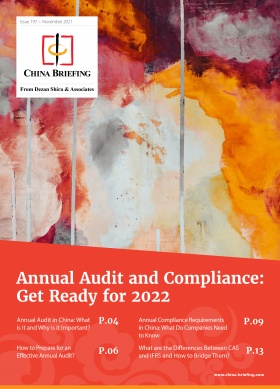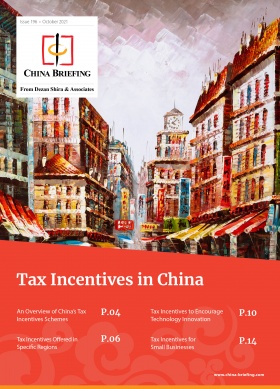China Stops Issuing GSP Licenses to 32 Countries: An Explainer
This October, the General Administration of Customs China issued a statement saying that it would stop issuing Generalized System of Preference certificates of origin for goods exported to 32 countries.
Since the announcement, there has been some confusion online over its significance, with some outlets seeming to suggest that these 32 countries had recently decided to revoke China’s GSP status, effective as of December 1, 2021, which is not the case.
Below we provide a brief clarification of the announcement and an overview of China’s current GSP status.
What happened?
On October 25, 2021, the General Administration of Customs China (GACC) released a statement saying that, as of December 1, 2021, it would no longer issue Generalized System of Preference (GSP) certificates of origin (also called ‘Form A’) for goods exported to 32 countries, because these countries no longer offer China GSP status. The 32 countries are composed of the 27 EU member states, the UK, Canada, Turkey, Ukraine, and Liechtenstein.
The misunderstanding that appears to have arisen in some online media is that China was recently removed from these countries’ GSP lists, and that is what prompted the GACC to stop issuing GSP licenses. However, China has actually not received GSP privileges from these countries for many years.
Since 1978, a total of 40 countries have granted China GSP status. The EU ceased granting China GSP privileges on all goods in 2015 after the World Bank upgraded its developing status to an ‘upper-middle income country’. Switzerland and Canada both revoked China’s GSP status in 2014, and Japan followed in 2016.
Currently, only New Zealand, Australia, and Norway still grant China GSP status.
The GACC’s recent announcement is therefore not a response to these countries’ recent decision to revoke China’s GSP status, rather a retiring of a service that is no longer required for these countries.
What is GSP?
GSP is a preferential tariff system that reduces tariffs on certain imports from developing countries (the ‘beneficiary country’). The system is non-reciprocal, which means that the beneficiary country does not have to grant the developed country (the ‘donor country’) the same tariff reductions.
This is in direct contrast to the Most Favored Nation (MFN) status, which bans countries from discriminating against investors or traders from another country (provided they are both World Trade Organization (WTO) member countries) and requires them to grant the same treatment and protections as those domestic investors and traders enjoy. GSP status, therefore, is a way of granting a permanent waiver of these requirements to the beneficiary country (as opposed to waivers offered in temporary trade agreements that are reviewed periodically).
The GSP system is designed to incentivize exports from the beneficiary country and promote its economic growth. It also helps to drive down the cost of import goods for consumers in the donor countries. The system is meant to be “generalized”, meaning that donor countries cannot discriminate against or offer preferential treatment to certain developing countries or goods.
What is a GSP certificate of origin?
To be eligible for reduced or waived tariffs, exporters must provide a GSP certificate of origin for their goods that are issued by the customs authorities in the exporting country. In China, this government body is the GACC. The document certifies that the goods were produced in the GSP-eligible country and must be presented at customs to prove their eligibility for preferential tariffs when entering the importing country.
A GSP certificate of origin is a type of preferential certificate of origin. Preferential certificates of origin certify the origin of goods under a specific trade agreement or other preferential system, of which GSP is one. Different certificates of origin are therefore issued for different trade agreements and preferential systems.
These documents are different from non-preferential certificates of origin, which are provided for goods that are not eligible for any preferential tariffs, or for where the MFN status prevails. As proof of origin is not always a requisite for exporting and importing goods, non-preferential certificates of origin are usually only issued for goods whose value is tied to their origin of production, for example, as proof of quality, or for goods being exported to countries with trade remedies (tariffs imposed on goods that are subsidized in the export country).
The GACC will therefore continue to issue preferential certificates of origin for other trade or preferential agreements, as well as non-preferential certificates of origin, to these 32 countries.
How will this impact trade with China?
The recent announcement makes no changes to China’s GSP status and will therefore not have any additional impact upon industries in China beyond that created by the original decision to revoke China’s GSP status many years ago.
It is worth noting that the US remains China’s largest export market, which has never granted China GSP status. To this day, the EU is China’s second-largest export market, with some of the labor-intensive industries most impacted by China’s removal from the GSP lists – industrial and consumer goods, machinery and equipment, footwear, and clothing – still among the top export goods to the EU.
The statement released by the GACC urged exporters that still need to provide certificates of origin to export goods to apply for a non-preferential certificate of origin or a preferential certificate of origin under an existing trade agreement.
As China is a member of the WTO, it is subject to the MFN rule when trading with other WTO member countries. Trade with the countries that formerly granted it GSP status is therefore now conducted under the MFN rule, which means tariffs on import goods must be reciprocal, which means that tariffs on Chinese goods imported to any WTO member country will be the same as those imported from other countries.
It bears mentioning that exceptions are sometimes given to the MFN rule under the General Agreement on Tariffs and Trade (GATT) Article XX on General Exceptions, which is what enables trade agreements to give preferential treatment to certain countries in some instances.
Similarly, the increased tariffs imposed on some Chinese imports to the US as a result of the US-China trade war have been the subject of debate and legal disputes, with the Chinese side arguing, among other issues, that the increased tariffs violate the MFN rule and the US side maintaining that the tariffs fall under the General Exceptions.
Does this mean China is no longer considered a developing country?
The question of whether China can be considered a developing country has sparked a considerable amount of debate, particularly as it pertains to issues of investment, trade, and the environment.
The World Bank’s decision in 2015 to classify China as an upper-middle income country spurred multiple trade partners to remove preferential tariffs, meaning that this designation has real-world consequences.
There is also some discussion among international investors as to whether to classify China as an emerging or developed market. On the one hand, China’s GDP per capita, which surpassed US$10,000 in 2019, puts it at the upper end of middle-income countries. However, many cities in China, notably first-tier and second-tier cities, have broken through the ‘middle-income trap’ and reached a higher wealth bracket (Shanghai’s per capita GDP in 2020 was approximately US$24,426).
China has also hinged its responsibilities to combat climate change on its status as a developing country. The justification behind the country’s carbon emissions plan to reach peak carbon emissions by 2030 and carbon neutrality by 2060 is that, as the world’s largest developing economy, its ongoing industrialization and urbanization creates an increasing energy demand, which currently can only be met through a high reliance on fossil fuels.
This position is supported by the Paris Agreement, which designates China as a developing country and therefore holds it to lower requirements.
Many critics of China’s climate action plans have therefore taken aim at its status as a developing country, arguing that China’s climate action plans are insufficiently ambitious given its considerable leverage as the second-largest economy in the world.
As it stands, China is still not considered a developed country by most international standards. The World Bank classifies countries with a per capita GDP of above US$12,695 as a ‘high-income country’, which the International Monetary Fund forecasts China will reach by the end of 2022. As for China’s own designation, the country aims to be a prosperous and fully developed country by 2049.
About Us
China Briefing is written and produced by Dezan Shira & Associates. The practice assists foreign investors into China and has done so since 1992 through offices in Beijing, Tianjin, Dalian, Qingdao, Shanghai, Hangzhou, Ningbo, Suzhou, Guangzhou, Dongguan, Zhongshan, Shenzhen, and Hong Kong. Please contact the firm for assistance in China at china@dezshira.com.
Dezan Shira & Associates has offices in Vietnam, Indonesia, Singapore, United States, Germany, Italy, India, and Russia, in addition to our trade research facilities along the Belt & Road Initiative. We also have partner firms assisting foreign investors in The Philippines, Malaysia, Thailand, Bangladesh.
- Previous Article China’s New Draft Cybersecurity Review Rules to Impact Companies’ HK IPO
- Next Article I dati del 2021 confermano Hong Kong come un importante hub finanziario e commerciale








